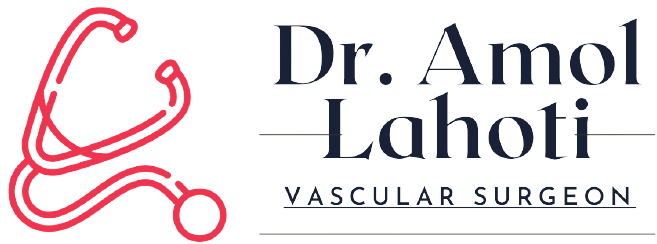Peripheral Vascular Disease (PVD) is a common circulatory condition that affects the blood vessels outside the heart and brain, most often in the legs and arms. Early recognition of PVD symptoms is crucial for timely intervention and to prevent serious complications such as ulcers, infections, or even limb loss. In this blog, we’ll explore the key symptoms of PVD, risk factors, and why seeking expert care is essential.
What Is Peripheral Vascular Disease?
Peripheral Vascular Disease occurs when blood vessels become narrowed or blocked due to atherosclerosis (buildup of plaque), reducing blood flow to the limbs. It’s often associated with peripheral artery disease (PAD), a specific form of PVD affecting the arteries. Poor circulation leads to tissue damage and discomfort, which can worsen over time if untreated.
Who Is at Risk of PVD?
Certain factors increase the likelihood of developing PVD:
- Smoking: Smoking damages blood vessel walls and accelerates plaque buildup.
- Diabetes: High blood sugar levels contribute to vascular damage.
- High Cholesterol: Excess cholesterol can clog arteries and restrict blood flow.
- Hypertension: High blood pressure places extra stress on blood vessels.
- Age: PVD is more common in individuals over 50 years old.
- Family History: A family history of vascular diseases increases susceptibility.
- Obesity and Sedentary Lifestyle: Extra weight and lack of exercise can hinder proper blood circulation.
Recognizing the Symptoms of PVD
Symptoms of Peripheral Vascular Disease can vary depending on the severity of the condition. Here are the most common signs to watch for:
1. Claudication (Leg Pain)
- A hallmark symptom of PVD, claudication refers to pain, cramping, or fatigue in the legs or hips during activities like walking or climbing stairs.
- The pain usually subsides with rest and returns when activity resumes.
- It’s caused by insufficient blood flow to the muscles during exertion.
2. Cold or Numb Extremities
- Affected limbs may feel colder than the rest of the body due to reduced circulation.
- Numbness or tingling sensations in the legs or feet are also common.
3. Skin Changes
- Skin on the affected limb may appear shiny, pale, or bluish.
- Hair loss on the legs, delayed nail growth, or brittle nails can also occur.
4. Non-Healing Wounds or Ulcers
- Small cuts or sores on the legs or feet may fail to heal and can develop into ulcers.
- These wounds are often a result of inadequate blood supply to the skin.
5. Weak or Absent Pulse in Legs or Feet
- Reduced or absent pulses in the lower extremities indicate poor blood flow.
- This is often detected during a physical examination by a healthcare provider.
6. Discoloration of Toes or Feet
- Toes or feet may appear dark red, purple, or even black in severe cases, signaling tissue damage or gangrene.
7. Pain at Rest (Critical Limb Ischemia)
- In advanced stages, patients may experience persistent pain in the legs or feet, even when resting.
- This indicates a severe blockage of blood flow and requires immediate medical attention.
8. Muscle Weakness
- Reduced blood flow can cause muscles in the affected limb to weaken over time, making movement difficult.
Importance of Early Detection
Early detection of PVD is crucial to prevent complications such as:
- Tissue Damage: Chronic lack of blood flow can lead to necrosis (tissue death).
- Infections: Non-healing wounds increase the risk of bacterial infections.
- Amputation: Severe cases may result in the need for limb amputation.
- Cardiovascular Events: PVD increases the risk of heart attack and stroke due to systemic atherosclerosis.
How Is PVD Diagnosed?
If you suspect PVD, consult a vascular specialist for an accurate diagnosis. Common diagnostic tests include:
- Ankle-Brachial Index (ABI): Measures blood pressure in the ankle and compares it to the arm to assess blood flow.
- Doppler Ultrasound: Uses sound waves to visualize blood flow in the arteries and veins.
- Angiography: A dye is injected into the bloodstream, and X-rays are taken to detect blockages.
- Blood Tests: Check for risk factors like high cholesterol or diabetes.
Treatment Options for PVD
Treatment for Peripheral Vascular Disease focuses on improving blood flow and managing symptoms. Options include:
1. Lifestyle Modifications
- Quit smoking and limit alcohol consumption.
- Follow a heart-healthy diet rich in fruits, vegetables, and whole grains.
- Engage in regular physical activity to boost circulation.
2. Medications
- Blood thinners to prevent clots.
- Cholesterol-lowering drugs to reduce plaque buildup.
- Medications to manage blood pressure and blood sugar.
3. Compression Therapy
- Compression stockings can improve circulation in the legs and reduce swelling.
4. Minimally Invasive Procedures
- Angioplasty: A small balloon is inflated within the artery to open blockages.
- Stenting: A stent (mesh tube) is placed to keep the artery open.
5. Surgical Interventions
- Bypass Surgery: A graft is used to reroute blood around a blocked artery.
- Endarterectomy: Plaque is surgically removed from the artery walls.
6. Wound Care
- Advanced wound care techniques, such as debridement or skin grafts, are used to treat ulcers or non-healing wounds.
Why Choose Dr. Amol Lahoti for PVD Care?
At Dr. Amol Lahoti’s Advanced Vascular Care, we offer expert diagnosis and personalized treatment for Peripheral Vascular Disease. Our state-of-the-art facilities and minimally invasive techniques ensure optimal outcomes for our patients. Whether you’re experiencing early symptoms or advanced complications, we provide comprehensive care to help you regain mobility and improve your quality of life.
Peripheral Vascular Disease is a manageable condition when caught early. Recognizing the symptoms and seeking professional care can make all the difference in preventing complications and preserving your health. If you’re noticing any signs of PVD, don’t delay—schedule a consultation with a vascular specialist today.
For expert care and effective treatments, contact Dr. Amol Lahoti’s Advanced Vascular Care in Aurangabad. Together, we’ll ensure your vascular health is in the best hands.
